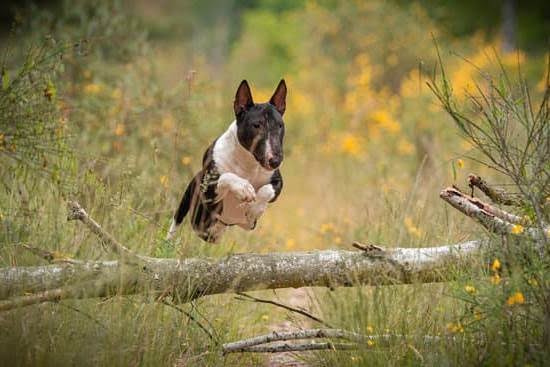Clicker training for dogs has gained significant popularity in recent years as a highly effective and positive method of dog training. But what exactly is clicker training? In this article, we will explore the concept of clicker training for dogs, tracing its origins and evolution over time. We will also delve into the principles, benefits, techniques, and troubleshooting associated with this innovative approach to dog training.
Clicker training is a form of positive reinforcement that uses a small handheld device called a clicker. The clicker produces a distinct sound when pressed, serving as a marker to communicate the desired behavior to the dog. This powerful tool has been embraced by professional trainers and dog owners alike due to its ability to quickly capture and reinforce desired behaviors in dogs.
As we dive deeper into the world of clicker training, we will discuss its historical background, from its origins in marine mammal training to its adaptation for use with dogs. Understanding the history behind clicker training allows us to appreciate how it has evolved into one of the most popular and effective methods of dog training today.
So whether you are an experienced trainer looking to explore new techniques or a novice owner hoping to establish a strong connection with your furry companion, this article will serve as an informative guide on what clicker training is all about, how it works, and why it is gaining recognition as an invaluable tool for shaping desired behaviors in dogs.
Historical Background
Clicker training for dogs may seem like a relatively new concept, but its roots can be traced back several decades. The origins of clicker training can be credited to the work of marine mammal trainers in the mid-20th century.
These trainers used a device called a “bridge” to mark desired behaviors in animals during their training sessions. This technique was later adapted and refined by animal behaviorist Keller Breland and his wife Marian Breland Bailey, who are often referred to as the pioneers of modern clicker training.
In their work with marine mammals, such as dolphins and killer whales, the Brelands discovered that using a distinct sound, like a whistle or clicker, to mark the desired behavior helped the animals understand and learn faster. They realized that this method was more effective than using verbal cues or physical rewards alone.
With this realization, the Brelands began utilizing clickers in their dog training programs as well. They found that dogs responded exceptionally well to this form of positive reinforcement, just like their marine mammal counterparts. Clicker training rapidly gained popularity within the dog training community due to its effectiveness and ability to cultivate a strong bond between dogs and their handlers.
As time went on, clicker training techniques continued to evolve and be refined by trainers around the world. The principles were applied not only in obedience training but also in various other areas such as agility, service dog work, and even canine sports competitions. Today, clicker training has become widely recognized as one of the most humane and efficient methods for teaching dogs new behaviors and modifying existing ones.
Overall, the historical background of clicker training highlights how this innovative approach originated from observations made by marine mammal trainers and then expanded into an effective method for dog training. Its evolution over time has led to its widespread adoption by professional trainers and enthusiasts alike. With its roots firmly established in scientific principles of learning theory, clicker training has proven itself to be a valuable and versatile technique in the world of canine training.
Understanding the Clicker
What is a Clicker?
A clicker is a small handheld device that emits a distinct and consistent sound, typically a sharp click or snap, when pressed. It is used as a communication tool between the trainer and the dog to mark desired behaviors and signal to the dog that they have done something correct. The clicker serves as a bridge between the behavior performed by the dog and the reward they receive.
How Does it Work?
Clicker training works on the principle of positive reinforcement. When the dog performs a desired behavior, such as sitting or lying down, the trainer immediately clicks and follows it with a treat or reward. The click helps to clearly communicate to the dog that they have done something right and that they will be rewarded for it.
The purpose of using a clicker instead of verbal cues or other forms of communication is its consistency and precision. Unlike words or hand signals which can vary in tones or execution, the sound of the clicker is always exactly the same. This allows for clear communication with no room for confusion from the dog’s perspective.
The Significance in Dog Training
The significance of using a clicker in dog training lies in its ability to create an association between the desired behavior and reward. By consistently clicking at the exact moment when the dog performs the correct action, they learn to understand what specific behaviors lead to positive outcomes.
Clicker training helps dogs learn more quickly and effectively because it provides immediate feedback to them. They can easily understand which behaviors are being reinforced by associating them with the sound of the click followed by a reward. This not only accelerates their learning process but also strengthens their bond with their trainers.
Moreover, using a clicker allows for precise timing. The trainer can capture even subtle nuances in behavior, making it easier to shape more complex actions over time. It also enables trainers to teach dogs new behaviors and tricks using a systematic and structured approach.
Principles of Clicker Training
Positive Reinforcement
One of the core principles of clicker training for dogs is the use of positive reinforcement. This means that desired behaviors are rewarded with something the dog finds valuable, such as treats, praise, or playtime.
The clicker serves as a bridging stimulus that marks the exact moment the desired behavior occurs, signaling to the dog that a reward is coming. By focusing on rewarding and reinforcing positive behaviors, clicker training helps to build a strong bond between the trainer and the dog and creates a positive learning experience.
Clear Communication
Clicker training also emphasizes clear communication between the trainer and the dog. The clicker acts as a consistent and distinct sound that can be easily distinguished by the dog, even in noisy environments. This enables precise timing, as it allows for immediate feedback when the desired behavior is performed. The consistent use of the clicker helps to eliminate confusion or ambiguity, ensuring that the message being conveyed to the dog is clear and concise.
Free Thinking and Problem Solving
Another key principle of clicker training is promoting free thinking and problem-solving in dogs. Rather than relying on force or punishment to control behavior, clicker training encourages dogs to actively think and explore different options to earn rewards. Through exercises like shaping, where small steps towards a desired behavior are gradually reinforced, dogs learn to offer behaviors willingly without fear of making mistakes. This approach not only enhances their problem-solving abilities but also boosts their confidence and independence.
By incorporating these principles into their training methods, trainers using clicker training promote a positive environment where dogs can thrive both mentally and emotionally. With its focus on building trust through positive reinforcement, clear communication, and encouraging active participation from dogs in their own learning process, clicker training has gained popularity among dog owners as an effective method for teaching new skills and improving obedience.
Benefits of Clicker Training
Clicker training for dogs has gained significant popularity in recent years due to its effectiveness and numerous benefits. This section will explore the advantages and positive outcomes associated with clicker training methods.
One of the main benefits of clicker training is its ability to create a clear line of communication between the dog and the trainer. The clicker serves as a consistent and precise marker, signaling to the dog that they have performed the desired behavior correctly. This immediate feedback helps dogs understand exactly which behaviors are being reinforced, making it easier for them to repeat those behaviors in future training sessions.
Another advantage of clicker training is its positive reinforcement-based approach. Traditional training methods often rely on punishment or correction techniques, which can be stressful for both the dog and the trainer. In contrast, clicker training focuses on rewarding desirable behaviors with treats or praise, creating a positive learning experience for the dog. This positive reinforcement strengthens the bond between the dog and their trainer and increases their motivation to learn.
Research has also shown that clicker training can lead to faster learning and better retention of learned behaviors in dogs. The distinct sound of the clicker helps dogs differentiate between correct behaviors, which speeds up their understanding of what is expected from them. Additionally, because clicker training relies on rewards rather than punishments, dogs are more likely to retain what they have learned long-term.
| Benefits | Description |
|---|---|
| Clear Communication | The clicker provides a consistent marker that helps dogs understand which behaviors are being reinforced. |
| Positive Reinforcement | Clicker training focuses on rewarding desirable behaviors, creating a positive learning experience for dogs. |
| Faster Learning and Retention | The distinct sound of the clicker helps dogs differentiate between correct behaviors, leading to faster learning and better retention. |
Getting Started
Clicker training is a popular and effective method of training dogs that uses a small handheld device called a clicker. Before diving into the training process, it is important to understand the steps involved in getting started with clicker training.
- Choose the Right Clicker: When selecting a clicker, it is crucial to find one that is comfortable for you to hold and operate. There are various types of clickers available, including box clickers, button clickers, and whistle clickers. Experiment with different styles to determine which one feels natural in your hand.
- Clicker Conditioning: Before using the clicker in training sessions, it is essential to condition your dog to understand that the sound of the click signifies something positive. Start by associating the sound of the click with treats or rewards. Press the clicker and immediately offer a treat or reward. Repeat this process several times until your dog begins to associate the sound of the click with something good.
- Timing is Key: One of the most critical aspects of using a clicker in dog training is timing. The sound of the click should be an immediate marker for your dog’s correct behavior or actions. Ensure that you press the clicker exactly when your dog performs the desired behavior, followed by quickly offering a reward or praise.
- Introduce Simple Commands: Once your dog understands that clicks result in rewards, you can start incorporating simple commands into your training sessions while using the clicker as reinforcement. For example, if you are teaching your dog to sit, wait for them to sit naturally, then press the clicker as they do so and promptly reward them.
Remember that consistency and patience play vital roles in successful clicker training. It may take time for your dog to fully grasp what behaviors are being reinforced by the clicker, so be persistent and provide plenty of positive reinforcement. With practice, your dog will begin to associate the click with desired behaviors, making training sessions more effective and enjoyable for both you and your furry friend.
Clicker Training Techniques
Clicker training is a highly versatile form of dog training that allows for a wide range of techniques and exercises. These techniques are designed to shape the dog’s behavior by using positive reinforcement through the sound of a clicker. By understanding and practicing these techniques, dog owners can effectively train their dogs and achieve desired behaviors.
One popular technique in clicker training is shaping. Shaping involves breaking down the final behavior or trick into small achievable steps. The trainer clicks and rewards each time the dog exhibits a step towards the desired behavior until they eventually reach the final behavior. For example, to teach a dog how to shake paws, the trainer would reward any slight movement towards lifting their paw off the ground and gradually shape it into a full paw shake.
Another technique commonly utilized in clicker training is targeting. Targeting involves teaching the dog to touch or follow a specific object with their nose or other body parts on command. This technique is useful for teaching dogs to go to a specific spot, follow a target stick, or even perform agility exercises. By clicking and rewarding when the dog touches the target object with their nose or paw, they learn to associate this action with positive reinforcement.
Capturing behaviors is yet another technique that can be effectively used in clicker training. It involves “capturing” naturally occurring behaviors from the dog by clicking and rewarding them when they display those behaviors. For example, if a dog sits on their own without any cues from the owner, the owner can quickly click and reward this sitting behavior. Through repetition, capturing can reinforce desired behaviors in everyday situations.
Overall, these techniques represent just a few examples of what can be achieved through clicker training methods. Each technique encourages positive reinforcement rather than punishment, allowing for an enjoyable learning experience for both dogs and trainers alike. By incorporating these techniques into their training sessions, dog owners can create a strong bond with their pets while instilling good behaviors and fostering overall obedience.
| Technique | Description |
|---|---|
| Shaping | A technique where the behavior is broken down into small steps, rewarding each step towards the desired behavior. |
| Targeting | A technique where a specific object is used to teach the dog to touch or follow it with their nose or other body parts on command. |
| Capturing | A technique where naturally occurring behaviors from the dog are clicked and rewarded to reinforce those behaviors. |
Troubleshooting
While clicker training can be a highly effective method for training dogs, it is not without its challenges. In this section, we will address some of the common challenges or misconceptions that dog owners may encounter when using clicker training techniques, and offer tips on how to overcome them.
One challenge that dog owners may face is timing the click correctly. Timing is crucial in clicker training because the click serves as a marker for the desired behavior. It is important to ensure that the click is delivered at the exact moment the dog is performing the desired behavior. Some dog owners may find it difficult to time their clicks accurately, especially in fast-paced situations or when teaching complex behaviors.
To overcome this challenge, it can be helpful to practice with a friend or family member who can assist you by manipulating the environment or setting up scenarios where you can practice clicking at the right moment. You can also use video recordings of your training sessions to review and analyze your timing. With practice and repetition, you will become more proficient at timing your clicks effectively.
Another common challenge is fading out the clicker once the behavior has been learned. Many people mistakenly believe that dogs will only respond to commands if they hear the sound of a clicker, leading them to rely on it too heavily. However, the goal of clicker training is for the dog to associate the clicking sound with reward and understand that it indicates they have performed the desired behavior correctly.
To overcome this misconception, it’s important to systematically fade out the use of the clicker as you phase in other cues or signals such as verbal commands or hand gestures. This process is known as “weaning off” the clicker. Gradually reduce your reliance on clicking, while still rewarding your dog with treats or praise for correct responses. Eventually, your dog will learn to respond to verbal or visual cues alone, without the need for the clicker.
Advanced Clicker Training
Clicker training for dogs is not limited to basic obedience commands. It also provides a platform for teaching advanced skills and tricks that can impress your friends and family. By utilizing the principles of positive reinforcement and capturing behaviors, clicker training can unlock a dog’s potential in performing complex tasks and entertaining routines.
One of the advanced skills that can be taught through clicker training is agility. Agility training involves guiding a dog through an obstacle course, including hurdles, tunnels, weave poles, and balance beams. With the help of a clicker, handlers can use this training method to communicate precise timing and accuracy requirements to their dogs. The click serves as an instant signal that the dog has performed the desired behavior correctly, encouraging them to continue with enthusiasm and confidence.
Another impressive skill achievable through clicker training is scent detection. Scent detection involves teaching a dog to identify specific scents, such as explosives, narcotics, or even certain medical conditions like diabetes or cancer.
This skill has proven to be invaluable in various professional fields like search and rescue, law enforcement, and medical settings. Clicker training allows for systematic shaping of this behavior by gradually introducing scent cues paired with rewards, ensuring a strong association between the target odor and positive reinforcement.
It’s important to note that while advanced skills may take more time and effort than basic commands, they are within reach when using clicker training methods. Remember to break down each behavior into small steps or approximations and reward your dog’s progress along the way. As you work together towards mastering these complex tasks or tricks, you will not only develop a stronger bond but also witness your dog’s intelligence and capabilities firsthand.
Conclusion
In conclusion, clicker training for dogs has proven to be an effective and valuable method for behavioral modification and skill development. By using positive reinforcement techniques, such as the sound of a clicker followed by treats or rewards, owners can establish clear communication with their dogs and encourage desired behaviors. This form of training not only teaches dogs specific commands and tricks but also builds a strong bond between owner and pet.
One of the key advantages of clicker training is its ability to provide immediate feedback to the dog. The distinct sound of the clicker serves as a signal that the dog has performed the correct behavior, making it easier for them to understand what is expected of them. This instant feedback helps speed up the learning process and allows dogs to make associations between actions and rewards more efficiently.
Clicker training also fosters a positive and rewarding experience for both the owner and their furry friend. The use of rewards, such as treats or praise, reinforces good behavior and motivates dogs to continue learning. As a result, this training method creates a sense of accomplishment for both parties involved, enhancing their relationship and creating a happy and healthy environment.
Furthermore, clicker training unlocks the potential within every dog. Whether it’s basic obedience commands or complex tricks, this method provides endless opportunities for shaping behaviors. With patience, consistency, and proper guidance, owners can help their dogs reach new levels of skill development while nurturing their natural instincts.
Frequently Asked Questions
Is a clicker good for dog training?
A clicker can be extremely beneficial for dog training. It is a small handheld device that makes a distinct clicking sound when pressed, allowing the trainer to mark desired behaviors with pinpoint accuracy. The consistent and unique sound of the clicker provides a clear signal to the dog, helping them understand exactly which action is being rewarded.
By using positive reinforcement techniques, such as pairing the click with treats or praise, dogs quickly learn what behaviors are desirable. Clicker training can create a strong foundation for obedience training, tricks, and behavior modification.
What is the purpose of a clicker in dog training?
The purpose of a clicker in dog training is to serve as a marker or bridge between desired behaviors and rewards. The precise sound of the clicker helps to capture and reinforce specific actions that we want our dogs to repeat.
By associating the click with rewards consistently, we condition the dog to understand that hearing the sound means they have done something right and will receive reinforcement shortly after. This allows us to communicate more effectively with our canine companions during training sessions and speeds up their learning process.
When should I start clicker training my dog?
Clicker training can begin as soon as you bring your new puppy home. Puppies are highly adaptable and curious, making this an ideal time to introduce them to new experiences and skills. Starting early brings numerous advantages, as puppies have a greater natural inclination to explore their environment and seek guidance from their owners.
Clickers allow you to shape basic behaviors like sitting, lying down, or coming when called through positive reinforcement methods without resorting to force or punishment. However, it’s important to keep in mind that timing and consistency are key components in clicker training success regardless of when you start – be patient with your puppy as they learn how this unique form of communication works.

Welcome to the blog! I am a professional dog trainer and have been working with dogs for many years. In this blog, I will be discussing various topics related to dog training, including tips, tricks, and advice. I hope you find this information helpful and informative. Thanks for reading!





